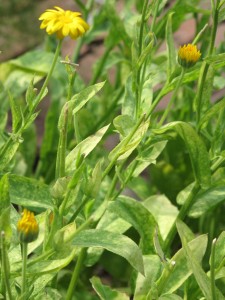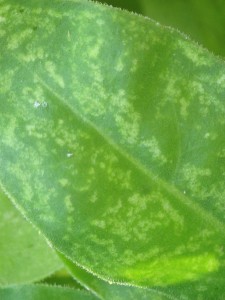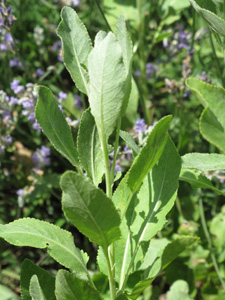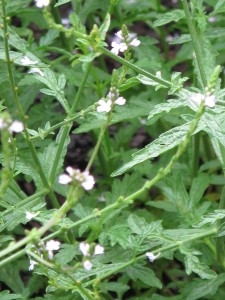Thursday, July 21, 2011


Left: A severe infestation of two-spotted mites on a calendula growing in Bonnefont garden. Right: A detail of the damage done by this common hot-weather garden pest, which sucks the chlorophyll from the leaves of the host plant. Photographs by Corey Eilhardt
The hot, dry weather that has us struggling to keep the gardens watered is all too welcome to the two-spotted mite, Tetranychus urticae, a worldwide pest of crop plants, ornamentals, and houseplants that is as much at home in greenhouses and apartments as it is outdoors. Two-spotted mites, along with other members of the Tetranychus family, are commonly known as spider mites. They are arachnids but are more closely related to ticks than to spiders.
Read more »
Tags: Bonnefont Garden, Calendula officinalis, catmint, hops, humulus lupulus, lady???s mantle, Levisticum officinale, lovage, meadow rue, Nepeta x faassenii, pest, Phytoseiulus persimilis, pot marigold, spider mites, Tetranychus urticae, Thalictrum aquilegifolium, two-spotted mite
Posted in Botany for Gardeners, Gardening at The Cloisters | Comments (2)
Friday, July 8, 2011


Hops (Humulus lupulus), considered today to be crucial to beer brewing, were not commonly used until the fifteenth century. Before that time, brewers added different herbs, such as??alecost??(Tanacetum balsamita), to their beer to improve its flavor. Several of these medieval brewing herbs can be found in Bonnefont garden.
Ale is made of malte and water; and they the which do put any other thynge to ale then is rehersed, except yest, barme, or godesgood, doth sofystical theyr ale.
???Andrew Borde, The fyrst boke of the introduction of knowledge, 1452
Beer was a staple drink for medieval Europeans, as it provided much-needed calories to the often undernourished population and was cleaner and safer to drink than water. Then, as now,??beer was made by brewing malted barley in boiling water to make sugars more available for yeasts to consume (see an image of Jorg Prewmaister tending his brew in a page from a fifteenth-century German manuscript, Amb. 317.2). This sugary, malty potion, known as “wort,” eventually becomes beer after the yeasts eat the sugars, releasing carbon dioxide and alcohol as byproducts of fermentation. On its own, wort is fairly flat in flavor, so brewers add additional ingredients, such as hops and spices, to enliven a beer’s taste.
Read more »
Tags: Achillea millefolium, Add new tag, ale, alecost, barley, beer, brew, bryan_stevenson, costmary, Glechoma hederacea, ground ivy, gruit, hops, humulus lupulus, Ledum palustre, malt, Myrica gale, Reinheitsgebot, stinging nettle, sweet gale, Tanacetum balsamita, Urtica dioica, wild rosemary, wort, yarrow
Posted in Botany for Gardeners, Food and Beverage Plants, Fragrant Plants, Medicinal Plants | Comments (3)
Friday, July 1, 2011

The medieval vervain was identified with the “holy herb” known to the Greeks and Romans. Despite its unprepossessing appearance, common vervain is one of the great magico-medical plants of the Western tradition.
Many odde olde wives tales are written of Vervaine tending to witchcraft and sorcerie, which you may read elsewhere, for I am not willing to trouble your eares with supporting such trifles as honest eares abhorre to heare.
???John Gerard, The Herbal or Generall Historie of Plants, 1597
Read more »
Tags: Pliny, Verbena officinalis, vervain
Posted in Magical Plants, Medicinal Plants | Comments (0)





